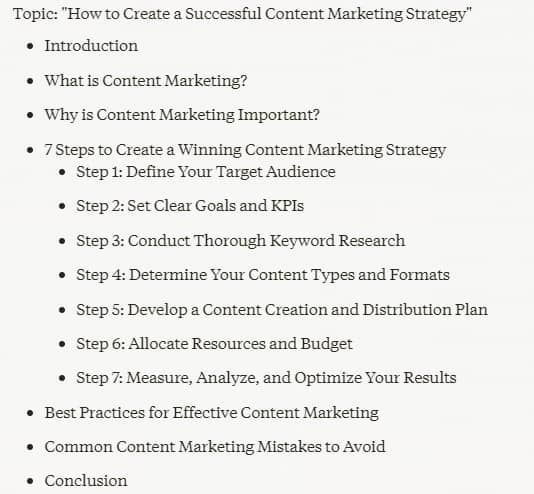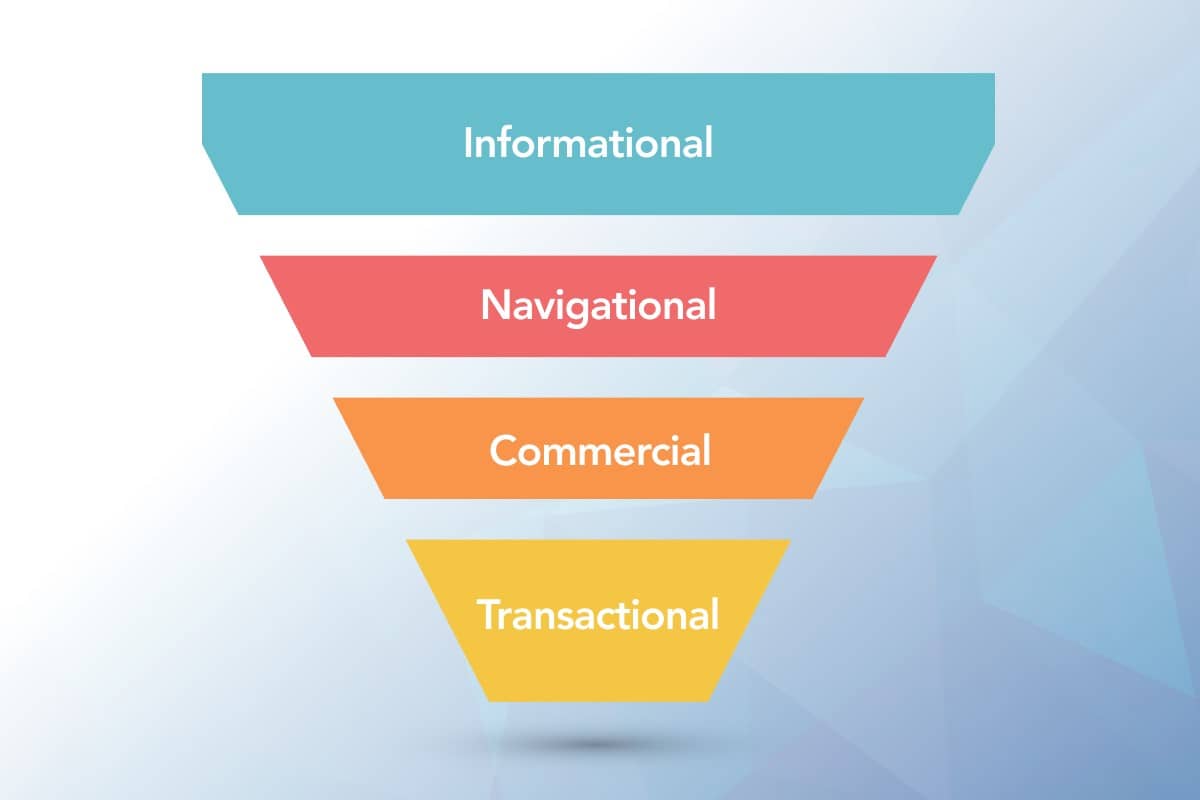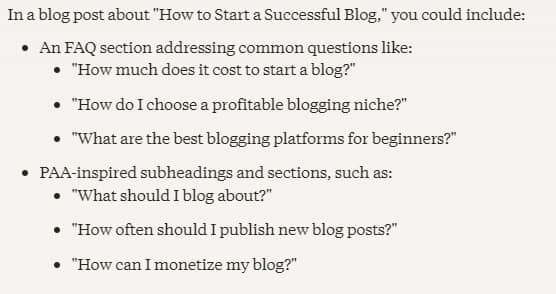Last Updated on February 17, 2025 by Admin
Creating helpful, engaging content for users and search engines is just half the battle. With more than 7.5 million pieces of content published every single day, it is important to optimize your content for search engine result pages. Also, researchers prove that organic traffic brings 53% of all web traffic. So, using the right SEO copywriting techniques is not an option but is essential to compete online.
Now, Google keeps updating its algorithm, suitable for its users but a nightmare for copywriters. Whatever the updates are, the primary intent is to provide quality content to the users. Hence, in this blog, we’ll discuss nine ways to boost your copywriting performance for search results.
What is SEO Copywriting?
SEO Copywriting is the same as it sounds! You already know the SEO and writing parts, and SEO copywriting combines both. It means you write to satisfy users and search algorithms. The main goal is to get better rankings for the targeted keywords and, ultimately, more user engagement.
Why is SEO Copywriting Important?
In a world where every business has a website and half is on social media, content alone cannot be cut. You need SEO copywriting to:
- Helps to improve organic presence and boost traffic for specific searches
- Boost user interaction and time users spend on the website
- Set your business apart as a go-to source in your industry
- Lead nurturing and conversion rate optimization
Search engine optimization is a great way to get the leads you want for content marketing and increase trust in your content.
9 Tips for SEO Copywriting Success
If you want to learn the art of writing content that performs better in search engines’ algorithms, then SEO copywriting is what you need to study. Follow these nine steps, and you will not only improve your content’s rankings but also increase your audience’s engagement and conversion. Now, I will explain each piece of advice in further detail with examples of how to use it and put it into practice.
1. Research the Right Set of Keywords
Keyword research is the key to any SEO Copywriting. This essentially means targeting high-traffic keywords that are in line with a site’s or its pages’ content and goal.
Begin by conducting a basic keyword seed related to your industry. Then, use powerful tools like Google Keyword Planner, Ahrefs, or SEMrush to expand your keyword list and gather valuable data, such as:
- Search volume
- Keyword difficulty
- Cost-per-click (CPC)
- Related keywords and phrases
Concentrate on long-tail keywords to target those that are particular and less competitive and target the content that matches audience intent. For example, rather than using a generic term like ‘content marketing,’ you may use a long-tail keyword phrase such as ‘B2B content marketing strategies for SaaS companies’.
2. Create a Data-Driven Outline
An outline that helps organize the information and support the data is crucial in SEO copywriting. Time spent organizing the purpose and structure of your content using your keyword research and competitor analysis will save you time in the long run.
Here’s a step-by-step process to create a compelling outline:
- Determine the keywords associated with the primary topic of the paper and the subsequent subtopics reflecting some questions.
- Study the top-ranked content for the chosen keyword to find the trends in the shared content, headlines, and content types.
- Logically arrange the structure by using section headings and subheadings.
- Ensure that your outline includes all the significant elements regarding the topic.
- This will make it easy to match the keywords and phrases in the headings and subheadings.
Example:

3. Identify and Satisfy Search Intent
It is important to research search intent to create content that connects with your audience. The search intent is defined as the user’s purpose behind the query. Here’s how to identify and satisfy search intent:
Types of Search Intent: There are four main intents in the search: informational, navigational, commercial, and transactional intent. Find out which category of intent best suits your target keywords.

- Informational: Users who have questions (for example, “how to start a blog”).
- Navigational: Users who want to access a particular website (for example, “Facebook login”).
- Commercial: People are looking for products or services (for example, “best SEO tools”).
- Transactional: Customers are willing to purchase (for example, “buy SEO tools”).
Match Content to Intent: Write content relevant to the keywords researched. For example, if the intent is informational, then provide more details and beneficial information. If the intent is transactional, it has to be clearly indicated, and a call to action and product information must be provided.
Analyze SERPs: Check the search engine results pages (SERPs) for those keywords to get an idea of the type of content ranking. Follow E-E-A-T principles while writing content to serve users and search engines. This can help you satisfy the search intent.
4. Establish Proof and Credibility
With the massive amount of information available on the internet, there must be a sense of trust in the content. It is important to build credibility and trust to make your content valuable and interesting to the readers. Here are some effective ways to do so:
- Refer to the research studies, industry reports, and other credible experts to support the arguments and claims.
- Use statistics and facts to present your content backed up by reliable sources.
- Use examples taken from real life, companies’ cases, and success stories to support the argument.
- Encourage your brand to provide social proof, such as customer reviews, media mentions, or recommendations, to show how it is recognized digitally.
- Do not shy away from giving more information about the individual self, their qualifications, and milestone achievements that prove your competence in the particular topic.
5. Optimize Header Tags, Title Tags, and Meta Descriptions
The title tag and meta description are the sections that are first viewed by both users and search engines. They are very important in making readers and search engines click and in communicating the value of the content.

Here are some best practices for optimizing these key elements:
Title Tags
- Write effective headlines that attract readers and capture the primary theme of the content and its potential benefits.
- Make sure you include your main keyword early in the title tag.
- Keep your title tags at less than 60 characters so that all of the text can be displayed in the search results.
- Pick phrases that resonate emotionally and use powerful words and numbers to make your titles attractive.
Meta Descriptions
- Create interesting and engaging meta descriptions that give users an idea of what the page is about and why they should visit it.
- Ensure that you place your primary keyword within the meta description.
- Meta descriptions should be between 120 and 155 characters to ensure they can display fully when a search result is retrieved.
- Introduce a CTA that will push your readers into clicking and engaging with your website.
Header Tags (H1, H2, H3)
- You should have only one H1 tag, and make sure it is descriptive, including your main keyword and summarizing the content of your article.
- Organize your content into logical sections with refined H2 and H3 Heading tags that incorporate keyword information and eliminate large blocks of text.
- Consider the organizational hierarchy of your page to provide a better experience for both humans and search engines.
6. Create Organized, Easy-to-Read Content
Making sense to the reader and allowing them to navigate through it is critical for keeping their attention and avoiding them leaving the page. Readability is crucial to the user and the SEO, as search engines consider user-friendliness when ranking websites.
To improve readability and user experience, follow these best practices:
- Keep your paragraphs brief (2-3 sentences long) and keep the whitespace between each paragraph high to allow for easy reading.
- When the article has long blocks of text, use subheadings, bullet points, and numbered lists to make the text easier to read.
- Use simple and easily understandable language without an official or technical style.
- Use connecting words like although, however, but, still, and so on to connect different paragraphs and sections.
- Use responsive design and a bigger font to adapt content for mobile devices.
SEO-optimized content involves creating a variety of content types, such as:
- Blog posts
- Articles
- Videos
- Infographics
- Social media posts
The content should inform, engage, or motivate your desired audience. By providing genuinely useful and engaging content, brands can:
- Build trust
- Establish authority
- Create customer loyalty that will last for a long time.
It’s better to focus on readability and user experience—the higher the content’s value for readers and users, the higher its value for SEO copywriting goals.
7. Include Visuals
Aside from clean and coherent text, using the right pictures and videos in a post can increase the quality of the user experience while increasing search engine rankings. Besides, the use of images, videos, infographics, and charts may help break the monotony of text and keep the reader focused on the main messages of the presentation, taking into account that some people are visual learners.
Here are some ways to effectively use visual elements in your SEO copywriting:
- Images: Use only relevant images that connect with the message you are trying to convey to the audience, appeal to their emotions, and make the content more engaging visually. For image SEO, follow file name and alt tag guidelines and reduce file size to improve image load time.
- Videos: Add more details by embedding interesting and informative videos to illustrate your content, explain difficult-to-understand concepts, or promote your products or services. Use the video’s title, description, and tags for keyword optimization.
- Infographics: Design attractive graphics that convey information using data, numbers, or workflows. Infographics are the quickest and easiest way to get your post shared and attract backlinks and social media engagement.
- Charts and Graphs: Visuals that enhance the data, such as charts, graphs, tables, etc., should be used to make it easy for the audience to understand.
8. Include TOC and CTA
When it comes to website content and navigation, you must take your readers through the content and website with the navigational flow and call-to-actions buttons for them to fully engage and convert.
Here are some effective strategies:
- Table of Contents (TOC): When writing such lengthy articles or guides, you should include a table of contents with hyperlinks to the subsections so the reader can skip to the most relevant section. This increases readability and helps organize your content for better comprehension.
- Internal Linking: It is also important to link other content on your website to direct them to the content you have created that may be helpful to them. Use HTML tags to describe links to other pages, including keywords, to maximize the links’ SEO value.
- Calls-to-Action (CTAs): Use strong call-to-actions, such as providing links or buttons, in your content to direct your readers toward the next action you want them to take, whether it’s signing up for your newsletter, downloading a file, or purchasing. Utilise action phrases and leverage the urgency to drive the attention to clicking.
Example:

9. Include FAQs And People Also Asked Questions
Answering frequently asked questions (FAQs) about the topic is one of the most effective ways to show your audiences that you are an expert and give them a greater value, which also helps with search engine optimization.
Here’s how to effectively incorporate FAQs and “People Also Ask” insights into your SEO copywriting:
- Identify Common Questions: Searches in Google and Bing and analysis of social media and clients’ queries can help identify the most popular questions and concerns regarding your topic of interest.
- Create an FAQ Section: It is also wise to add a section that answers frequently asked questions to ensure you cover all your potential readers’ queries. The best structure for your FAQ section is to use question-based subheadings, such as “What is the best time to post on Instagram?” This will make your page easy to navigate and ensure that it is optimized for search engines.
- Incorporate Questions into Your Content: Another way to answer these questions is by integrating them into the content as an alternative to an FAQ section. This gives a broader yet more in-depth look at the topic by offering more information about it in a broader context.
- Leverage “People Also Ask” Insights: Check out the PAA box in Google search results for your targeted phrase and see what other questions and subtopics are related to your target keyword. Integrate this information into your content to meet users’ needs and target multiple queries.
Example:

Conclusion
SEO Copywriting is a valuable method for improving the reachability of the content, involving the audience, and achieving business goals. Using these nine content marketing strategies, you can rank your content on Google well and connect with readers. If you want the expertise and experience of professionals content writing services, contact the AlgoSaga SEO copywriting service team. With years of experience and a team of professional writers, they can give you compelling copies that don’t rank but also convert.
